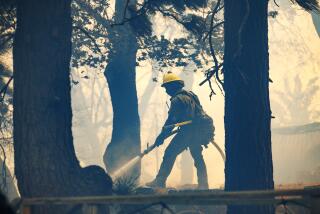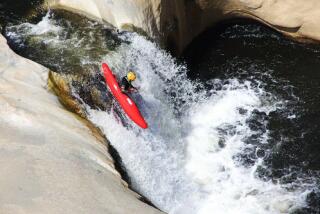The voice of a lost friend raises questions about risk
ENGINEER MOUNTAIN in the San Juans of Colorado is still in shadow as I drink from a Nalgene bottle a soupy mixture of hot chocolate and oatmeal -- lubrication for the peanut butter-smeared bagel.
Outside the tent, in the frozen and crunchy twilight snow, Iâm anxious to get moving. I call it morning sickness, the bloated I-just-slurped-it-down-for-the-calories-but-now-I-think-Iâm-going-to- puke feeling I often experience at altitude on summit day.
Or maybe itâs just nerves.
The approach, a low-angle slog, works its magic, and by the time weâre at the point where crampons are a good idea, I feel great. My urine runs clear, a sign that Iâm totally hydrated. Wonderful.
The route ahead, the northeast ridge, is beautiful against a cobalt sky and, like most mountains, deceiving. Itâs a semi-technical route -- some mixed rock and ice, a short chimney worthy of a belay and more than one section that qualifies as a knifeâs edge. Weâre not talking K2 or Everest -- weâll top out just below 13,000 feet.
But between the points where we rope up and pose for the summit photo are some potential problems, the most worrisome being the exposure on either side of the knifeâs edge.
To the left, there is a steep 40-degree slope with the telltale fracture line of a recent avalanche. To the right, the ridge tapers to an overhanging cornice, bonded to a near vertical rock that drops off into the proverbial game-over void.
At the base of the chimney, while my father-in-law tries to find purchase with his crampons in a sugary top layer of snow, I find myself hugging a hunk of granite. As snow showers down from above, my brother-in-law grins and says, âPretty wild, eh?â
Our guide, whoâd built an anchor higher up on a snowy ridgeline, sat -- his rear and heels sunk into deep buckets in the snow -- belaying. When my father-in-law punched through a hollow section and dropped suddenly, just a foot, but enough to thank the rope, our guide arrested the slip.
âReach high with that ax!â he yelled. âGet as many crampon points in as you can before you weight your leg!â
I was next in line.
That was when a little voice kicked in: It takes more guts to walk away. It was the voice of someone I hadnât heard in years. It belonged to my friend Craig Kelly.
Craig had been killed in an avalanche on the Durrand Glacier more than two years earlier in the Selkirk Mountains of British Columbia. You probably heard about it, all the networks covered it. Craig had been one of 13 backcountry skiers and snowboarders taken by what was estimated as a 21-ton slab avalanche. Seven died at the scene.
Craig was more than just a four-time world-champion snowboarder and probably the most famous snowboarder in the world. He was an amazingly cautious mountaineer who used his fame to help educate young, brazen snowboarders on the dangers of the mountains. Make no mistake, Craig loved powder snow more than anybody Iâve ever known. Still, he loved life more. I know of four instances where he deferred to a guideâs judgment and walked away from a slope because it was deemed too dangerous.
So, it was shocking when I got the phone call from a mutual friend, and I turned on the news. When the avalanche struck, Craig had been training to become a guide, the first snowboarder to attempt the grueling certification process of the Assn. of Canadian Mountain Guides. Heâd already been through their preliminary curriculum, and he knew better than to have been caught on a slope with so many people.
The most basic rule in safe route-finding is to never expose more than one person at a time. I canât imagine that he would have done it, not in a million years, without the nod from a more experienced guide.
When the avalanche occurred, Craig was at Selkirk Mountain Experience, a backcountry skiing and snowboarding service, learning from renowned Swiss-born mountain guide Ruedi Beglinger who for more than 30 years -- and more than 5,000 days on the mountain -- had a perfect safety record. Not a single incident, until that fateful day.
A thousand miles separate Durrand Glacier and Engineer Mountain, but this morning they seemed to be part of the same range. Waiting below that chimney, I realized that for the first time since Craigâs death, Iâd not exposed myself to anything remotely dangerous in the backcountry.
Here I was, uncertain how to maintain the lifestyle in the outdoors that made me who I am, while notching back the risk to a level that suited my newfound paternal instincts.
It had to have been Merrick, my first-born baby boy -- and my wife, Lorien -- who made me pause. This was the first time Iâd been away from Merrick since he was born, and with his birth came a whole new level of self-preservation. Outside of him, nothing else mattered. Craig had also experienced the joy of his first baby, a girl named Olivia, whom he considered his lifeâs greatest joy.
I wasnât a father at the time of his death, but now I know how cruel life can be. I think it was Stephen King who said there are varying degrees of darkness in hell. Craig had been dealt the blackest. So why hadnât he listened? Why had he taken such a risk?
As I started up the chimney, my heart was pounding. I felt a little queasy, but my inner voice had calmed. Then, with the exposed double-fall line of the first open slope ahead, I listened hard, but I heard nothing. There was just a slight breeze whistling through the vents of my helmet and my robotic exhales with each step.
At the summit, the San Juanâs spread out like a surreal relief map. Looking back down the northeast ridge, our deep-shadowed boot prints appeared like a serpentine etching -- black on white -- walking the line our guides had chosen for us.
After our descent, we treated our guides to a meal in downtown Durango. As we celebrated -- and toasted the work of our guides -- I couldnât help but think of Craig and the events of two years ago.
There is one image that has stayed in my mind. On Jan. 20, 2003, after the last of the survivors were airlifted away from the scene of the avalanche, Beglinger remained, sitting among the dead, mourning.
While the British Columbia coronerâs office launched an inquiry into the tragedy that determined the deaths were accidental and that Beglinger and his company were not responsible, it is hard not to assign blame. I know guides arenât perfect, they arenât gods or prophets. They have no crystal ball. No catch-all safety net. We, who play in the mountains, know this. They are only human, but still, when tragedy hits close to home -- and especially when it involves experienced individuals -- weâre embittered by loss and seek the truth.
I will be forever haunted by Durrand Glacier, though Iâve never been there. I will be forever haunted by that image of Beglinger. And I will always wonder: Did Craig ignore his own little voice and defer to Beglingerâs judgment? Something -- maybe fatherhood -- tells me he wouldnât have ignored even a whisper.
Eric Blehm is the author of the forthcoming book âThe Last
Season,â an account of the disappearance of a backcountry ranger in the High Sierra. His website is www.ericblehm.com.
More to Read
Sign up for The Wild
Weâll help you find the best places to hike, bike and run, as well as the perfect silent spots for meditation and yoga.
You may occasionally receive promotional content from the Los Angeles Times.






